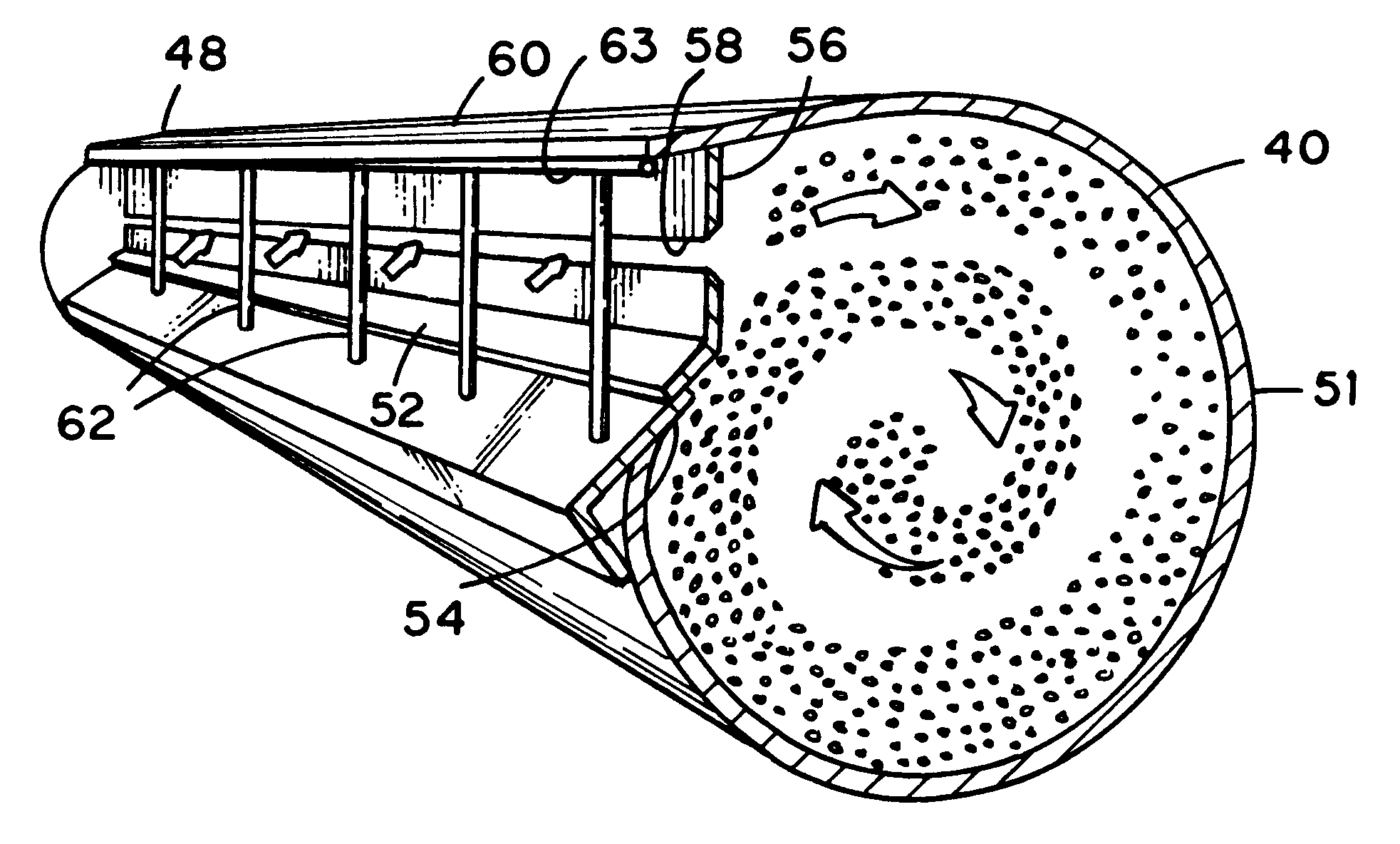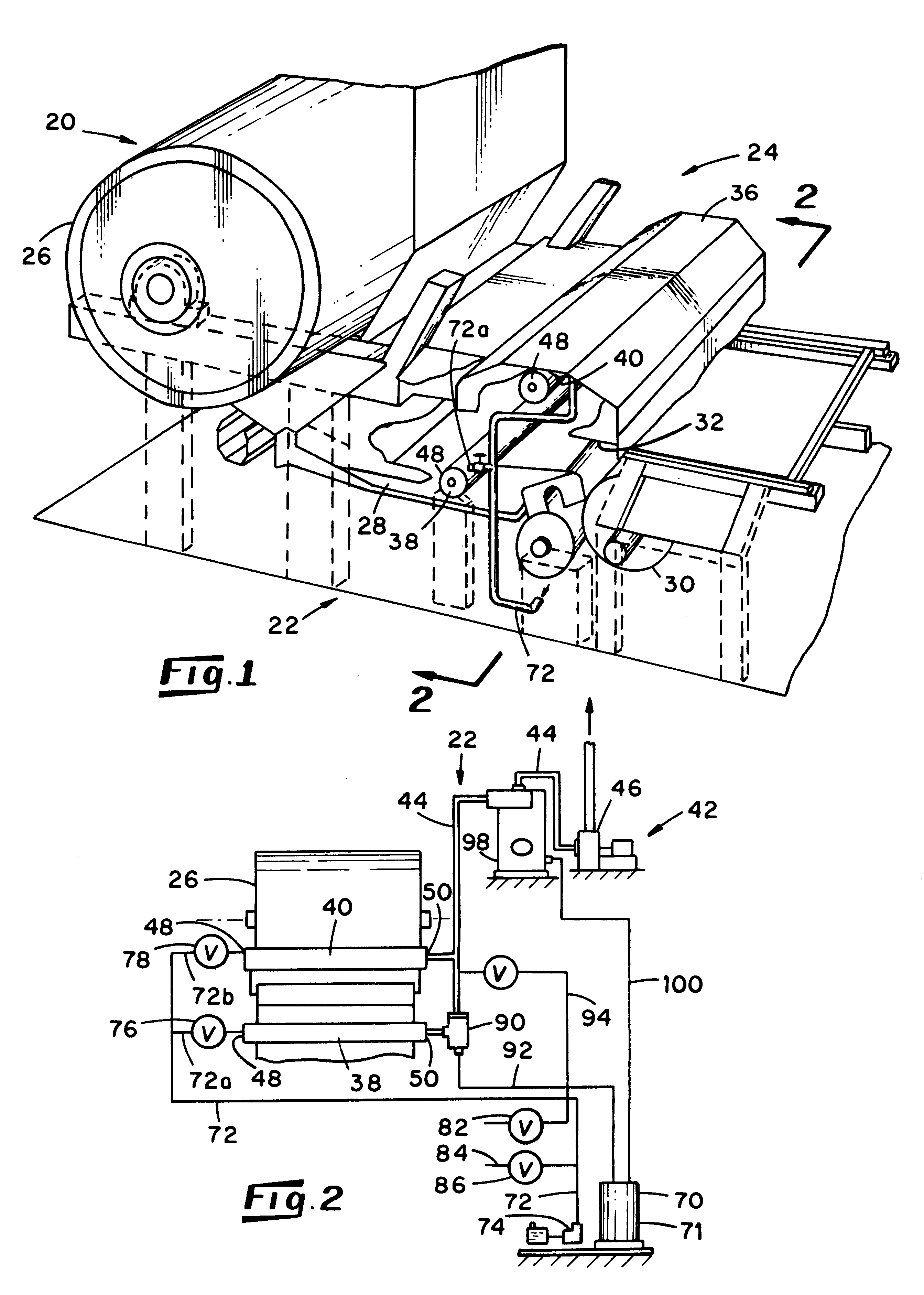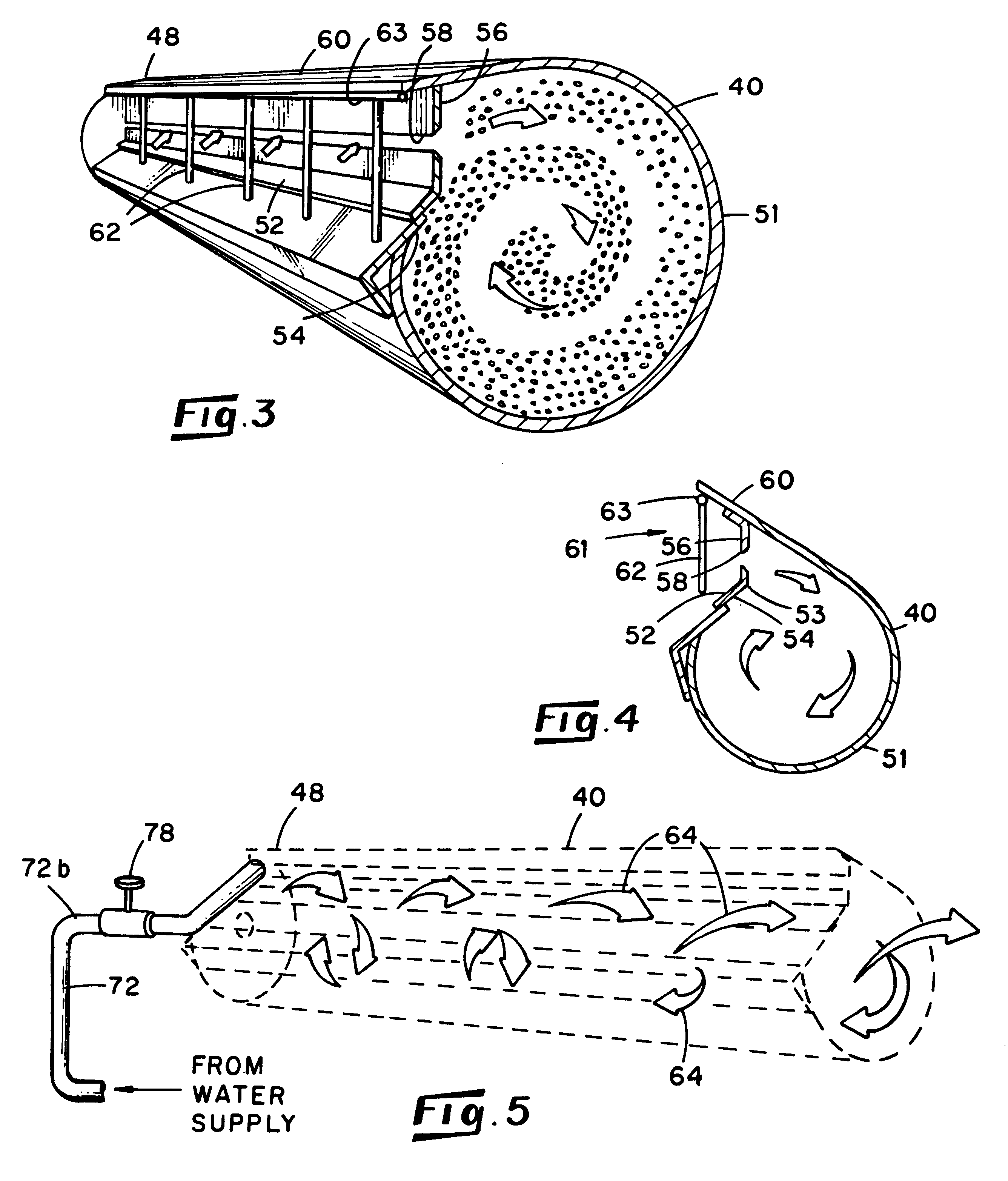Method and system for collecting and handling dust in a papermachine environment
a technology of dust collection and papermaking machine, applied in papermaking, separation of dispersed particles, separation processes, etc., can solve problems such as increased fire risk in those areas, increased risk of fire, and operation hazards
- Summary
- Abstract
- Description
- Claims
- Application Information
AI Technical Summary
Problems solved by technology
Method used
Image
Examples
Embodiment Construction
Turning now to the drawings in greater detail and considering first FIGS. 1 and 2, there is shown a typical environment, generally indicated 20, within which a dust collecting and handling system, generally indicated 22, is employed to carry out an embodiment of the process of the present invention. In particular, the environment 20 is that of a papermaking machine room within which a papermaking machine 24 is housed. The depicted papermaking machine 24 is a tissue-making machine including a series of rotating drums 26 (only one shown in FIGS. 1 and 2) across which a moving web 28 of tissue paper is routed before being wound about a roll 30 and is known to generate a relatively large amount of dust (including cellulose fiber, clay, starch and other chemical dust) during its operation. If permitted to be released into the air which surrounds the machine 24, this dust could create operating hazeards, worker health hazards, and could migrate to various areas of the room and create a cl...
PUM
| Property | Measurement | Unit |
|---|---|---|
| shape | aaaaa | aaaaa |
| length | aaaaa | aaaaa |
| transport velocities | aaaaa | aaaaa |
Abstract
Description
Claims
Application Information
 Login to View More
Login to View More - R&D
- Intellectual Property
- Life Sciences
- Materials
- Tech Scout
- Unparalleled Data Quality
- Higher Quality Content
- 60% Fewer Hallucinations
Browse by: Latest US Patents, China's latest patents, Technical Efficacy Thesaurus, Application Domain, Technology Topic, Popular Technical Reports.
© 2025 PatSnap. All rights reserved.Legal|Privacy policy|Modern Slavery Act Transparency Statement|Sitemap|About US| Contact US: help@patsnap.com



